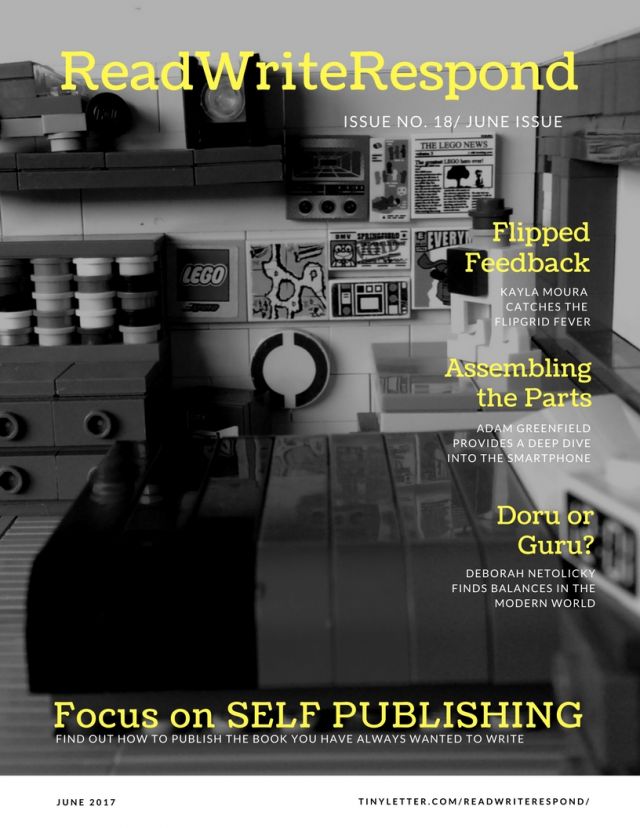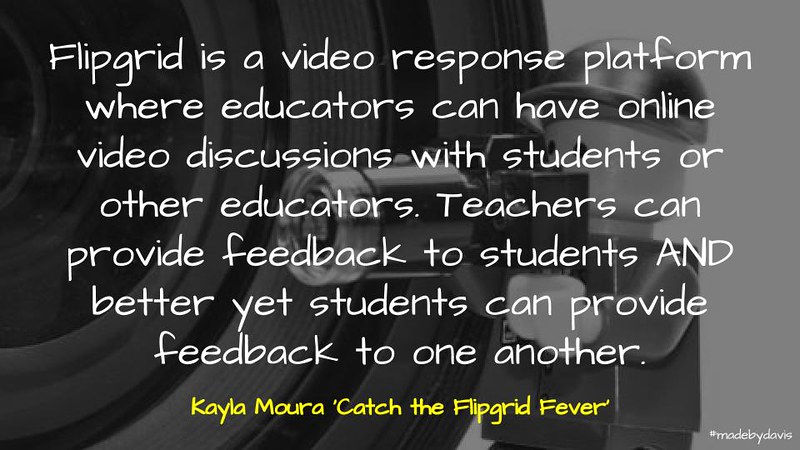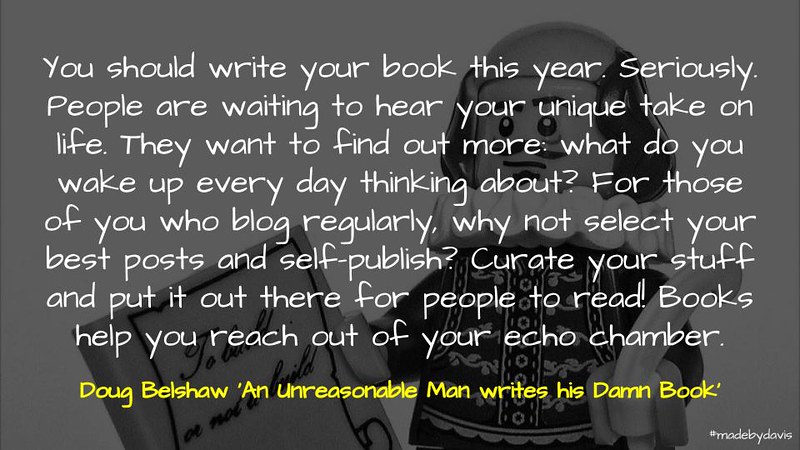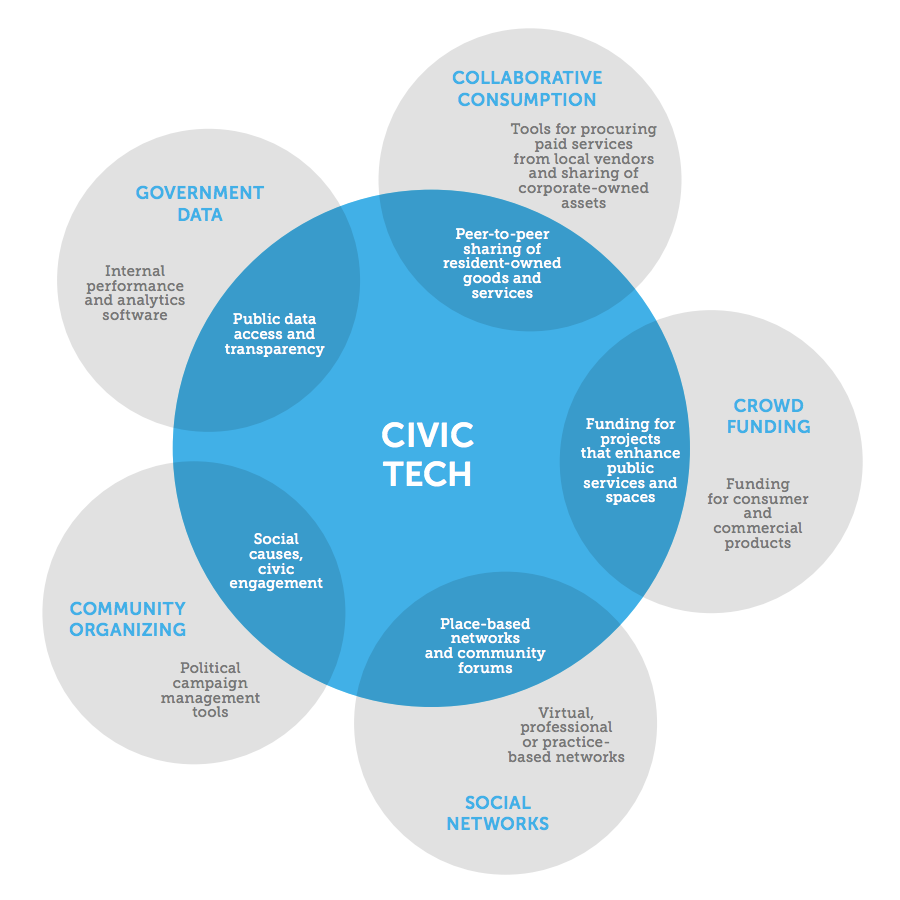
My Month of June
What a month. I discovered that I was not doing the job I thought I was doing, subsequently I got a name change. Now I am an eLearn Subject Matter Expert. Wondering if such surprises are part and parcel of an agile world?
In regards to the family, if it wasn’t one daughter then it was the other this month. Our youngest had the flu for a week, then our eldest stood on glass and had a visit to emergency. All good now, was just a bit hectic for a while. Maybe that is life?
In relation to my writing, thinking and learning, here was my month in posts:
- Art and Science of Teaching and Music – With the passing of Chris Cornell, I reflected on covering music compared with a faithful interpretation. This was associated with the idea of best practice
- REVIEW: The Global Education Race – A review of Sam Sellar, Greg Thompson and David Rutkowski book, The Global Education Race, Taking the Measure of PISA and International Testing.
- Reflections from #CoachEd2017 – A Reflection on the 5th National Coaching Conference for Educators held in Melbourne and the three ideas I was left with.
- A Comprehensive Guide to YouTube – A dive into watching, curating and creating content with YouTube.
- Developing Safer (Digital) Schools – A summary of a day spent with eSmart exploring safer schools. I also documented a number of my own resources collected over time.
- Starting the Learning Before the Conference – I asked the question, rather than waiting for people to walk into the room, what if we seek feedback from participants before they arrive at professional development sessions?
- The Risk of Hospitality – My response to the #Digciz discussion around hospitality, risk and vulnerability relating to online spaces. The post explored ideas of context, imaginary lines, tribes and mapping.
- Questions for Cal – After watching Cal Newport’s TED Talk on quitting social media, I was left reflecting on three questions: what is social media, what is work and how do I differentiate the changes in my mind?
- Daily Habits – Having spoken about the process involved in learning and the tools I depend upon, I have never thought about the daily activities which help me as a learner.
Here then are some of the thoughts that have also left me thinking …
Learning and Teaching
“Catch the Flipgrid Fever” by mrkrndvs is licensed under CC BY-SA
Catch the Flipgrid fever! 15+ ways to use Flipgrid in your class – Kayla Moura provides an introduction to Flipgrid, an application for visual feedback. To support this, she lists some potential uses, such as a debate, an exit ticket or a book report. In some ways it reminds me of Verso and the way that users can share and respond in a centrally managed space. The main difference is that Flipgrid is built around video.
Flipgrid is a video response platform where educators can have online video discussions with students or other educators. Teachers can provide feedback to students AND better yet students can provide feedback to one another.
Teaching and Learning Research Summaries: A collection for easy access – Tom Sherrington collects together a range of research-based resources to provoke deeper thinking around learning and teaching. This should not be considered the essential list, but rather a place to start a conversation about research. A need that Linda Graham wrote about recently.
There are several superb summaries of educational research that have been compiled into easily accessible websites and articles in pdf format that can be read online and shared with staff. Although they are easy to find via an internet search, I am pulling them together into one place for easy access.
Self-Editing Tools for Student Writing in Google Docs – Eric Curts looks at four areas of self-editing tools students can use when writing in Google Docs. He discusses speech-to-text, text-to-speech, grammar checkers and thesaurus tools. This year I have dabbled with ProWritingAid, a paid Google Docs addon that allows you to gain feedback within Gsuite. I discovered this via Vicki Davis’ blog. Other than that, I like the Grammarly add-on too. Neither replace the need of the human to understand the decisions being made.
One of the best features of Google Docs is the ability to share your work with others so they can offer comments and suggestions. As awesome as that is, sometimes a student may not have another person available to provide feedback, and will need to do the editing on their own. Thankfully there are loads of useful tools that can help students to self-edit their writing, including text-to-speech, grammar checkers, dictionaries, and more. With these resources students can take ownership of the editing process to improve their writing. Even if they can also receive peer feedback, these tools can help student do a majority of the editing on their own.
Crash Course Computer Science – Crash Course recently started a new series unpacking the history of computers hosted by Carrie Anne Philbin from the Raspberry Pi Foundation. Like the Contrafabulists podcast exploration of Underground Histories, Bret Victor’s History of Programming, John O’Brien’s paleofuture and Audrey Watters’ History of the Pedometer, Philbin’s explorations provides a context for the choices made associated with technology that many of us have come to take for granted today. This is not another ‘How to Code’ series.
In this series, we’re going to trace the origins of our modern computers, take a closer look at the ideas that gave us our current hardware and software, discuss how and why our smart devices just keep getting smarter, and even look towards the future! Computers fill a crucial role in the function of our society, and it’s our hope that over the course of this series you will gain a better understanding of how far computers have taken us and how far they may carry us into the future.
Instagram for Teachers – Tony Vincent explains how Instagram can be used in education. This post provides a range of examples and some considerations in regards to managing your account. Owned by Facebook, I am not sure where this all sits with Doug Belshaw’s assertion that friends don’t let other friends Facebook? As a platform, Instagram seems to be an alternative for some to a blog?
Instagram isn’t just for posting photos of food. Instagram can actually be a powerful learning and communication tool for educators, so I’ve written this guide for teachers. I’d like to show the kinds of things teachers can see on Instagram. I’d also like to tell you about the ins and outs of Instagram, starting with the basics and ending with crafting awesome posts.
Going Public and Going Pro: The Power of Portfolios, Publishing & Personal Branding – Michael Niehoff makes the case for the public element associated PBL being fostered through a personal portfolio. In addition to having a ‘canonical url‘ as Jon Udell would put it, Niehoff discusses the need to continually create content and maintain our own brand. This is a topic that Ian O’Byrne, Bill Ferriter and Bob Schuetz have touched upon elsewhere.
Traditionally, most of us associate portfolios with artists, writers and designers. In school, we have had watered down versions for years where students were asked to put their work in a folder that may or may not have been shared. Well, we are in a new era. Forget AP scores, weighted GPA’s and SAT scores. We are now in a portfolio world and economy. Remember, in a “Gig Economy” where our students are going to have to continually contract work and pitch themselves to clients, our students need a lifetime portfolio where they digitally present and publish their work….and themselves.
Edtech
“A Sociology of the Smartphone” by mrkrndvs is licensed under CC BY-SA
A Sociology of the Smartphone – Adam Greenfield shares a portion of his new book, Radical Technologies, unpacking smartphones. In this assemblage of parts he looks at what actually makes smartphones work, the changes they have brought to our habits and the impact on our environment. On this matter, Kin Lane documents the valuable bits in a smartphone that everyone wants, Doug Belshaw discusses email and notification literacy, Aral Balkan asks who owns the data, while Mike Caulfield rues the impact smartphones have had on research. Greenfield’s essay also serves as an example of how technology can construct a ‘templated self’. This is timely with the tenth anniversary of the iPhone. In another extract from Greenfield’s book, he reflects on the internet of things.
Whatever the terms of the bargain we entered into when we embraced it, this bargain now sets the conditions of the normal, the ordinary and the expected. Both we ourselves and the cultures we live in will be coming to terms with what this means for decades to come.
Twitter’s Misleading User Experience When Reporting Abuse – Bill Fitzgerald highlights the problem with the way that Twitter responds to abuse. Although to the person who has reported the issue the situation would seem resolved, the user is still present to the rest of the Twitter. This in part is a reminder that Twitter is a capitalistic advertising platform, something Audrey Watters and Kin Lane touch upon in a recent episode of Contrafabulists.
When Twitter automatically hides offensive content from the people who have reported it, they create the impression that they have done something, when they have done nothing. Design choices like this demonstrates Twitter’s apathy towards effectively addressing hate and abuse on their platform.
Coding for what? Lessons from computing in the curriculum – Speaking to a group of educators in Sweden, Ben Williamson focuses on the rise of computing in the curriculum. He traces some of its origins, as well as some of the cautionary tales and advice, especially the influence of private enterprise. This left me thinking about the Australian education system and the introduction of digital technologies. It too has largely been led by various investments, not-for-profit ventures and private providers. Although there has been a lot of talk about coding, there is little discussion about the critical side. Bill Fitzpatrick and Kris Shaffer’s explanation on how to spot a bot is a good start.
Technical know-how in how computers work has its uses here, of course. But also knowing about privacy and data protection, knowing how news circulates, understanding cyberattacks and hacking, knowing about bots, understanding how algorithms and automation are changing the future of work—and knowing that there are programmers and business plans and political agendas and interest groups behind all of this—well, this seems to me worth including in a meaningful computing education too.
Neither Locked Out Nor Locked In – Continuing on from the conversation about Domain of One’s Own, Martha Burtis goes beyond conformity in her explorations of a Domain of One’s Own in her keynote for #Domains17. One of the first steps is to find your own metaphor for the web. Will Richardson and Bruce Dixon provide a useful follow-up discussion on the Modern Learners podcast. There were some other great posts from Domains17, including Jesse Stommel and Sean Michael Morris on the need for pedagogical approaches that help Domain of One’s Own make the LMS irrelevant, Meredith Fierro on the web as a shipping container, Tom Woodward on running a multisite like a boss, Adam Croom on starting a new conversation and Amy Collier on going beyond the notion of residency to describe ideas of kindred spirits.
How do we create a space within our schools (with all their political, technical, and institutional realities) that truly embodies a spirit of self-determination and agency for our students. How do we free our students from the shackles of corporate and commercial Web spaces without creating some new kind of shackle? And, how do web build a platform for the practical, valuable, discernible activities of building on the Web while also grappling to understand the Web on which we build in deep and discerning ways?
How to install Linux on a Chromebook (and why you should) – J.M. Porup explains how to use Crouton and Gallium OS to turn Chromebooks into Linux laptops. Both options offer the ability to dual-boot, but come at a cost, as working in developer mode has the potential to open users up to various vulnerabilities. Mark O’Meara discussed this a few years ago, however his approach was to boot from a USB. Running Linux is an interesting idea and something that Dai Barnes and Doug Belshaw have discussed quite a bit lately on the TIDE Podcast.
Chromebooks are one of the most secure devices you can give a non-technical end user, and at a price point few can argue with, but that security comes with a privacy trade off: you have to trust Google, which is part of the NSA’s Prism programme, with your data in the cloud. Even those who put their faith in the company’s rusty “don’t be evil” mantra may find Chromebook functionality limiting—if you want more than Google services, Netflix, some other Web apps, and maybe the Android app store, then you’re out of luck. Geeky users willing to engage in some entry-level hackery, however, can install Linux on their Chromebook and unleash the Power of Torvalds™.
iOS Losing Steam To Chrome In The Classroom? Kahoot Releases First EdTrends Report – The team at Nibletz provide a summary of a new report from Kahoot looking at Edtech. What interests me about this is the ability for an application like Kahoot to grab such an insightful snapshot of habits and behaviours, but more interesting is what this says about Kahoot. It leaves me wondering if the application is in fact a front for something else? Just as Amazon started with books and Uber with transportation, is Kahoot starting with quizzes? Both this report and Snapchat’s addition of maps are reminders of the data which we hand over each and every minute. Kin Lane and Audrey Watters’ discuss this in light of monopolies on the Contrafabulist Podcast.
Kahoots own metrics have now reached 50 million monthly active users, 2M U.S. teachers, 25M U.S. students with over 20M public Kahoots. Kahoot is a game based learning platform that allows teachers to quickly and efficiently create interactive and fun, immersive game lessons for students.
What You Need to Know About “Acceptable Use Policies” – Ian O’Byrne discusses the role of an user policy and what makes them acceptable. For Tom Murray and Eric Sheninger, it is about being responsible and setting in place the appropriate behaviours. Coming from the perspective of terms and conditions, Bill Fitzgerald suggests searching for particular terms when investigating questions around consent, these include: third party, affiliations, change, update and modify. For the reality is not everyone has the time and resources to unpack applications like TurnItIn or ClassDojo. In the end, the challenge is first and foremostly to have deeper discussions about these topics, such as the one facilitated by the #digciz group.
Digital networks, websites, and services are a necessary component of the toolset required to build and utilize digital and media literacies. Appropriate policies, procedures, and guidelines are necessary to protect the developers and administrators of these texts and tools, as well as the users of these spaces. These documents often fail to provide users with the freedom needed to expand their skills, while still creating safe and appropriate boundaries for use of the Internet and all it has to offer. To prepare individuals to be digitally savvy, media literate citizens, there is a need for guideline guidelines, discussions, and agreed upon policies that emphasize successful practice and define the suitable use of the technology and tools being used.
Storytelling and Reflection
“Tweeting and blogging: Selfish, self-serving indulgences?” by mrkrndvs is licensed under CC BY-SA
Tweeting and blogging: Selfish, self-serving indulgences? – Responding to Clare Narayanan and her critique of the guru teachers who spend their time at Teachmeets and on Twitter, Deb Netolicky discusses finding balance between self care, family time and service to the profession. This is a reminder that being online is a choice with consequences. Something Claire Amos touches upon. Benjamin Doxtdater also suggests, maybe our primary focus should be on self-care and private journals.
Many of those who tweet and blog, I would argue, do so because they are interested in learning from others, sharing their own perspectives and experiences, and engaging with educators from around the world.
4 Critical Questions To Ask When Attending Education Research Conferences – Charlotte Pezaro (and Marten Koomen) unpack four questions to ask when attending research conferences. Many of these questions go beyond ‘research’ conferences and can be applied to a lot of PL, such as who is paying and what is put forwards as working. In part, this touches on some of the points Dan Haesler made in his post on disclosure, as well as the rise of the thought leader in society (rather than the public intellectual as Gramsci described).
Have fun, participate in discussions, share your ideas, and challenge (respectfully) the ideas of others. But most importantly, ask the critical questions of who is speaking (and ask about who is not), question speakers about what they’re claiming and the basis for those claims, look at how the narrative of the conference portrays and constructs education in Australia. Try to uncover who’s paying and what they’re paying for. Ask lots of questions of speakers in workshops. If you get a chance, ask a few very direct questions of the organisers.
Ep 10: ILEs, VCE and the Flow state – Steve Brophy and Dean Pearman discuss the challenges of innovation, particularly in the senior years. They suggest that with the culture of results, students have become conditioned into memorising content. Greg Miller has written a lot about giving pride of place to soft skills and capabilities, while Bianca Hewes has explained how PBL is possible in the final years. There are many who say that the senior assessment will not change until University changes. CCourses provided a clear vision in this area.
Transitions was a public research conference exploring research behind the move from traditional classrooms to what are being called innovative learning environments (ILEs) This day included a catch up with our good old friend Terry Byers (@tezzabyers). An interesting insight from the conference led to Dean and I taking an intense look at VCE and questioning the validity of the current system
Conditions for Community – Julian Stodd reflects on the conditions required for communities to prosper. He touches on such attributes as social capital, rules, consequences, social leadership, trust, fluidity of role and shared values. As always, Stodd uses a visual as a means of representing this thinking. I think that the only thing missing, that I have touched upon elsewhere, is a compelling case for being there. Associated with online communities, Jenny Mackness recently published her PhD looking into MOOCs and online learning environments.
Community’ is more than simply ‘technology’, or ‘space’.
4 keys that predict which education idea will be more than just a fad & Is “making” in education a fad or a lasting change? – In these two posts, Sylvia Martinez looks at the history of sticky ideas and makes a prediction about the place of makerspaces in the future. Building on the work of Schnieder, Martinez identifies four attributes that are important to the analysis: perceived significance, philosophical compatibility, occupational realism and transportability. This is an interesting read alongside Audrey Watters’ presentation on robots raising children at New Horizons Media.
Will making in education have a lasting effect on education, or will it become just another “new new thing” that is overtaken by some newer new thing? It certainly has the perceived significance. Both academic credentials and cultural trends are working in its favor. It has philosophical compatibility with many teachers and parents too. They see children starving in a desert of worksheets and tests and know there must be a better way. … There may be more to worry about in other areas. In some cases it has transportability, especially when using simplified models like Design Thinking. The problem is that simplified models and canned lesson plans are a double-edged sword. As they helps teachers with operational realities, it removes agency from the teacher. Is it inevitable that creating a version of making in education that is widely acceptable will by its nature create unacceptable compromises?
Before and After Ok Computer – With the twentieth anniversary of Ok Computer, Charles Aaron provides an audio guide to the album’s 12 songs, plus what came before, and what came after. It is an interesting exercise to place the album in a context. I remember seeing Radiohead in concert a few years ago, one of the best concerts I have ever been to. In other anniversaries, it was recently the 50th anniversary Sgt. Pepper’s Lonely Hearts Club Band too.
“OK Computer” has a reputation as a sprawling dystopian reckoning, a commentary on the time’s relentlessly digitizing means of production by thrashing those very means. It’s an album of the proper sort – striving towards a narrative of sound and vision. If you wish, there are treatises to consult on this matter. Ultimately, the record serves as Radiohead’s sturdiest argument for itself as one of rock’s most thoughtful and sonically compelling bands, a claim that critics and fans have made consistently since its release 20 years ago.
FOCUS ON … Publishing Your Own Book
“An Unreasonable Man writes his Damn Book’“ by mrkrndvs is licensed under CC BY-SA
In a recent blog post, Steve Brophy wrote about moving from dreaming of writing a book to having enough content to do so. The question though is what is the process. Here then are some of the posts and examples that I collected together on the subject:
-
How To Structure and Write a Self-published E-book – Nik Peachey explains how to get on with the task of writing and structuring a book.
-
Publishing a Commercial Book with Creative Commons – Andrés Guadamuz on negotiating a Creative Commons licence when working with a publisher.
-
One year on: The Really Useful #EdTechBook – David Hopkins collects his thoughts on publishing a collaborative text.
-
Book Review: “APE: Author, Publisher, Entrepreneur – How to Publish a Book” – David Hopkins reviews a book associated with self publishing.
-
An Unreasonable Man writes his Damn Book – Doug Belshaw shares a range of resources, including several platforms to support publishing.
-
Write and Sell Your Dawn Book – Paul Jarvis shares a step-by-step guide for writing a book.
-
Be a Writer – Part One, Two, Three and Four – Sue Crowley unpacks a number of challenges associated with being a writer, including home truths, audiences, publishing and copyright.
-
My ebook, ‘The Essential Elements of Digital Literacies’ is now pay-what-you-want (including nothing!) – Doug Belshaw shares some reflections on publishing, including. his openbeta process
-
The Curse of the Monsters of Education Technology – An example of the way in which Audrey Watters publishes her books across a number of platforms.
-
The Trust Sketchbook: a reflective space to explore – An example of a book being published via a Kickstarter campaign.
READ WRITE RESPOND #018
So that is June for me, how about you? As always, interested to hear.
Also, feel free to forward this on to others if you found anything of interest or maybe you want to subscribe?
Cover image: “My room” by justlego1O1 https://flickr.com/photos/103739566@N06/34954439821 is licensed under CC BY-SA








